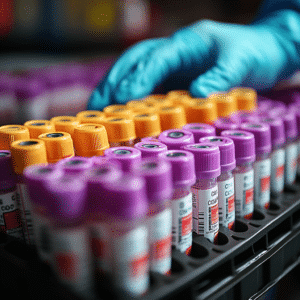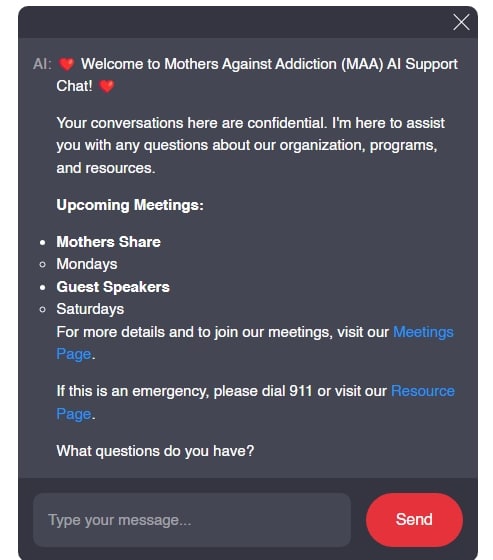In an era where the landscape of public safety is more challenging than ever, the importance of the Center for Domestic Preparedness (CDP) cannot be overstated. This facility provides essential training for first responders, ensuring they are well-prepared to handle a multitude of crises—from natural disasters to public health emergencies. Beyond just immediate response, the CDP equips these brave individuals with tools to manage their mental health, fostering a community that’s not only well-trained but also resilient.
Each training program at the CDP reflects a commitment to excellence and adaptability. Given the rising need for effective crisis management, examining how these training opportunities empower first responders reveals invaluable insights. Here’s a closer look at seven key programs that provide a foundation for a strong public safety response.

7 Key Training Programs at the Center for Domestic Preparedness
The variety of training programs the Center for Domestic Preparedness offers is truly impressive. Each program focuses on different critical areas, ensuring first responders have the comprehensive skills they need:
This training equips first responders with the know-how to identify and respond to CBRN events. Practical simulations allow responders to work through real-life scenarios, increasing their confidence in tackling potential threats.
Emergencies in healthcare demand swift actions. This program teaches responders effective crisis management tactics tailored specifically for healthcare environments, emphasizing coordination and collaboration that are crucial during high-stress situations.
As ensuring safety in schools grows increasingly urgent, this program prepares responders to navigate crises within educational settings. Through simulated scenarios, they learn to coordinate a cohesive response with school officials, ensuring the smooth execution of emergency protocols.
Clear communication is vital during disasters. NIMS training enhances responders’ ability to communicate effectively, enabling different teams to work together harmoniously, a skill that’s essential for managing crises.
This initiative empowers responders to take on teaching roles, ensuring the spread of critical skills and knowledge within their communities. The emphasis on effective communication and adult learning principles fosters a knowledgeable network of trainers.
This course soared in relevance during the COVID-19 pandemic by focusing on preparing medical responses in crises. Participants train on deploying medical teams quickly and managing public health challenges, both of which are vital in protecting communities.
Recovery after a disaster is pivotal. This training helps responders guide communities back to normalcy, focusing on collaboration across various agencies to implement coherent recovery strategies.

Linking Training with Analysis: The Columbia Suicide Severity Rating Scale
Mental health is a significant concern for first responders. Utilizing tools like the Columbia Suicide Severity Rating Scale (C-SSRS), the CDP emphasizes the importance of monitoring mental health resilience. Given the traumatic experiences responders face, being equipped to recognize signs of mental distress is essential. By integrating these assessment frameworks into their training, the CDP prepares first responders to look after their mental wellness while managing emergencies.
This focus on mental health isn’t just beneficial for individual responders; it creates a healthier work environment overall. When first responders can identify their own stress and support their peers, they foster a culture of open communication. These conversations can ultimately lead to improved operational effectiveness and reduced burnout.
Training Impact: Analyzing Texas Adult Drivers
Traffic incidents present a critical challenge for first responders, especially those involving adult drivers in Texas. By incorporating real-time data reflecting driving behaviors into their training scenarios, the CDP ensures responders are well-equipped to handle the aftermath of accidents more effectively. This proactive stance enhances not just the immediate response but also ensures they can cater to specific case needs, including those influenced by intoxication—an issue relevant to many families affected by addiction.
By understanding patterns in traffic incidents, responders can receive tailored training that aligns with real-world challenges. The result is not just a more adept group of first responders, but also a safer community overall.
Administrative Insights: The Mayors Management Report
To continuously improve training methods and examine performance metrics, the Mayors Management Report serves as a critical resource. By highlighting the metrics that affect first responder performance, it directs attention toward areas needing further investment. Real-time dashboards provide valuable insights, allowing for better resource allocation and informed decisions on how to enhance training effectiveness.
By staying on top of these statistics, the CDP paves the path for future investments. This ongoing analysis is pivotal in refining educational programs and ensuring that first responders meet community demands efficiently.
Technology Integration: The Role of Planning Center Online
As we advance technologically, the significance of platforms like Planning Center Online becomes evident in training logistics. This platform centralizes session databases and participation metrics, enabling program coordinators to assess performance trends and identify areas that need improvement.
By streamlining these logistics, the CDP enhances the training process. Coordinators can focus on individuals who might require extra guidance or specific skill enhancements, ultimately bettering the training experience for all involved.
Data Awareness: Utilizing the National Practitioner Data Bank
To bolster educational efforts and maintain high standards, the CDP leverages insights from the National Practitioner Data Bank. Monitoring and evaluating clinicians’ practices informs emergency training programs and ensures that content remains relevant and aligned with current medical standards.
With this data-driven approach, the CDP tailors training offerings to equip responders with the skills necessary to address real-world medical and emergency scenarios. This adaptability enriches the learning experience, contributing to a more prepared and effective first responder community.
The effectiveness of the Center for Domestic Preparedness in training first responders is evident in their proactive methods and innovative educational programs. By continuously adapting to societal needs, the CDP fortifies the strength of first responders, ensuring they’re poised and ready to confidently face complex challenges. As parents, caregivers, and advocates working with communities affected by addiction, we can take comfort in knowing that a prepared first responder force stands ready to assist during emergencies that intertwine with the struggles we’ve seen in dealing with addiction. Every program, every initiative—it’s all about saving lives, and that’s something we can all rally behind.
Center for Domestic Preparedness: Engaging Trivia and Fun Facts
The Training Hub for First Responders
The Center for Domestic Preparedness (CDP) is a notable institution that trains first responders in incidents involving hazardous materials and disaster response. Established by the Department of Homeland Security, this training center is key in readying responders for emergencies. Did you know that training like this is crucial for teams getting ready for all sorts of scenarios, from natural disasters to terrorist attacks? Just like understanding the fda meaning can benefit food safety professionals, proper training helps protect communities during crises.
One fascinating aspect of the center is its engaging simulation exercises. Imagine firefighters and EMTs navigating through smoke-filled rooms while honing their skills. It’s as intense as breaking the 400 meter world record, where every second counts! The immersive environment allows trainees to learn how to act quickly and effectively. After all, just as important as knowing what does sativa do to you is having the right tools at hand—like the invaluable training these heroes receive at the CDP.
Tailored Resources and Support
Training isn’t the only highlight. The CDP offers a toolbox filled with resources for first responders to improve their knowledge base. This toolbox widget includes everything from online courses to hands-on workshops, making information more accessible. And let’s not forget career opportunities that come from such training, much like how various paths open up for those interested in Penske careers after completing their certifications!
Moreover, it’s critical to be aware of the support systems in place for first responders. Just as understanding the risks of an ibuprofen overdose can be vital for a medic, being trained at the CDP equips responders with the knowledge to make quick, life-saving decisions. The environment there is not just about training—it’s about building a network, similar to how folks find community with shared interests, even if it’s something as niche as plus size compression socks for athletes needing comfort and support during their runs.
In summary, whether it’s the vital training programs or the supportive resources, the center for domestic preparedness plays a crucial role in shaping the readiness of our first responders. Engaging trivia and information only scratch the surface of what this center achieves in keeping our communities safe!





























